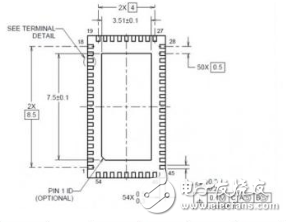The changed signal (such as the step signal) propagates along the transmission line from A to B. The coupled signal is generated on the transmission line CD. When the changed signal ends, that is, when the signal returns to a stable DC level, the coupled signal does not exist, so the crosstalk is not present. It only occurs during the course of a signal transition, and the faster the change (signal rate) of the signal edge, the greater the crosstalk that is generated. The electromagnetic field coupled in space can be extracted as a set of infinite coupling capacitors and coupled inductors. The crosstalk signal generated by the coupling capacitor can be divided into forward crosstalk and reverse crosstalk Sc on the victim network. The two signals have the same polarity; The crosstalk signal generated by the inductor is also divided into forward crosstalk and reverse crosstalk SL, which are opposite in polarity.
The forward crosstalk and reverse crosstalk generated by the coupled inductor and capacitor are present at the same time and are almost equal in size. Thus, the forward crosstalk signals on the victim network cancel each other out due to opposite polarities, and the reverse crosstalk has the same polarity and superimposed enhancement. Patterns for crosstalk analysis typically include default mode, tri-state mode, and worst case mode analysis.
The default mode is similar to our actual crosstalk test, where the victim network driver is driven by the flip signal and the victim network driver remains in the initial state (high or low) and then calculates the crosstalk value. This method is effective for crosstalk analysis of unidirectional signals. The tri-state mode means that the infringing network driver is driven by the flip signal, and the tri-state terminal of the victim network is placed in a high-impedance state to detect the crosstalk size. This approach is effective for two-way or complex topologies. The worst case analysis refers to keeping the drive of the victim network in an initial state, and the emulator calculates the sum of the crosstalk of each of the default aggressor networks for each victim network.
This method generally only analyzes individual critical networks because there are too many combinations to calculate and the simulation speed is slow.

Divide an optical jumper into two to become two optical pigtails.
The optical jumper refers to the optical connection line with the optical fiber movable connector installed at both ends of the optical fiber or optical cable. It is usually used for fiber patching or switching in distribution equipment or between optical equipment, and the length is usually no more than 10 meters.
It is a popular and common saying in the industry that when the connecting wire is an optical cable (indoor optical cable), it is called an optical fiber jumper, and when the connecting wire is an optical fiber, it is called an optical fiber jumper.
In mobile communications, coaxial cable jumpers have special product standards, while optical jumpers are different. Optical jumpers do not have special product standards. Because the attenuation of optical fibers is very small, and the length of optical jumpers is not long, the optical fiber attenuation is negligible. Therefore, the optical fiber movable connector standard is also used as the optical patch cord standard in practice. Some content of the optical fiber movable connector is different from the optical patch cord. However, in the long run, the industry has already considered the optical fiber movable connector standard That is, it is the standard for optical patch cords.
Lc Pigtail,Fc Pigtail,Sc Pigtail,Communication Devices,E2000 Pigtail
Shenzhen GL-COM Technology CO.,LTD. , https://www.szglcom.com
